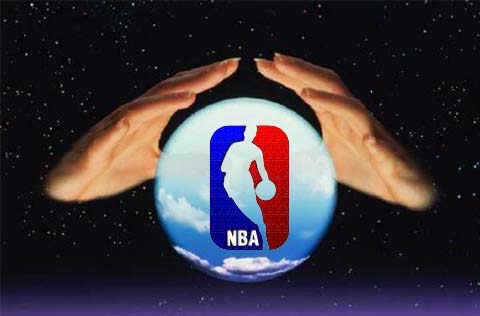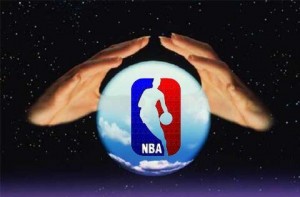Playoff Proposition Primer
We invited resident NBA prop guru @HardwoodHype back to talk NBA playoffs and here was what he came up with. Throughout the quest for the Larry O’Brien trophy, he’ll be making weekly visits to share his perspective on attacking the inefficient prop markets.
First and foremost: when betting an over line, MAKE SURE YOUR PLAYER WILL BE ON THE FLOOR. More than any other factor, this is vital. There is a single unifying trait among basketball players that put up numbers: They have to be on the floor to do so but keep in mind all playing time is not created equally.
How often does a player (superstar or not) see superstar minutes (35+)?
Take a look at the minutes players logged during the abbreviated regular season and realize minutes may actually go up this time of year as coaches have no reason to rest major contributors. Also, as prop lines tend to fall in line with season averages, pay attention to the manner in which a player receives his playing time. Better to align yourself with a 33-minute per game guy whose playing time rarely deviates by more than a minute or two game-to-game than a guy averaging the same 33, but seeing anywhere from 24 to 42 minutes of burn a night dictated by the situation.
Is a player chronically foul-prone?
In honor of the opening weeks of the 2009-10 season, I refer to this as the Greg Oden Principle. Decidedly pro-Oden at the time (I still would be, if only…), I fell into several over bets involving the snakebitten big man in the 11.5 range for points + rebounds. Easy money, right? RIGHT….y’know, until the inevitable “two fouls, done for the quarter” stroll to the pine at the 7:00 mark of the first quarter.
Looking ahead to the upcoming playoffs, Paul Millsap (3.8 fouls/36 minutes), Blake Griffin, Tyson Chandler (3.3 each) and Marc Gasol (just 3.1, but he’s got Blake and CP3) are the prop-worthy players for whom frequent whistles are an issue. Roy Hibbert, with 3.6 personals/36 also has a place on this list, though a first round matchup with Orlando is unlikely to put him at great risk. Conversely, Shawn Marion, Andre Iguodala, LeBron James and Luol Deng rank among the least foul-prone of this year’s lot. Elite defenders, these guy foul at a rate of no more than 1.7/36, despite logging big minutes.
How big a threat is a guy to be tossed from the game?
We can call this the Rasheed Wallace Corollary (Stephen Jackson works here as well, with DeMarcus Cousins well on his way if the Kings ever make the playoffs and Andrew Bynum as a potential heir to the throne). If you’re going over with a loose cannon, make sure you’re getting good value. As much as the dreaded mid-first quarter trip to the bench sucks, knowing that your guy will return (maybe only to commit more fouls, but still) offers a modicum of consolation that seeing a guy launch into a full-scale meltdown and earn an escort to the locker room simply does not.
How often does a player suffer in-game injuries?
We’re not talking about the Odens and Michael Redds of the world – players for whom nagging injuries are not an issue because they’re always in the midst of a12-month post-op rehab stint. Nor are we talking about guys that are perpetually day-to-day and seemingly always out for a week or two – think Steph Curry. No, this is a more sinister breed –seemingly always healthy but possessing an incredible knack for getting nicked up once the ball is tipped and all bets are final. This gentleman specializes in the dreaded “injury timeout,” often requires aid in leaving the floor and, as a result of quality time spent with the training staff, rarely maximizes on-court opportunities: The Vince Carter Special if you will.
Prior to diving into the numbers, I attempted to identify a couple of high-risk players who based on 2011-12 endurance, would pose a risk here – and encountered considerable difficulty. Apparently that was more a function of reality than my advancing age, as virtually the entire crop of minute-eaters in this postseason has proven remarkably durable. I examined a multitude of game logs in an attempt to determine the players most likely to see their playing time truncated, and found incredibly that:
– 18 players in the 2012 playoff pool averaged 35+ minutes per game. In the games in which they suited up, these guys combined for 19 outings of fewer than 24 minutes (I rounded a bit, but the broader point holds).
– Though he only failed to eclipse the 24-minute mark twice (outings of 10:40 and 22:22, on February 6 & 8), Derrick Rose, the only one of the 18 to miss more than nine games, represents the greatest risk here. It will be worthwhile to look at fading lines that assume a 100% healthy Rose, though I’d think twice about getting married to this contrarian take if it does not hold early.
– Rudy Gay, whom I’d preconceived as a particularly risky guy in this aspect, took the floor 65 times in 66 games, never for less than 26:44. Oops.
– Kobe Bryant, LeBron James, Chris Paul, Kevin Durant, Blake Griffin and Pau Gasol took part in 377 of a possible 396 games. Not once for fewer than 26 minutes. These guys (with the possible exception of Blake – let him show something first) are anchors.
While we’re here, let’s queue up another of VC’s Greatest Hits: subpar effort. Every team and player at every level of sport has off nights and letdown games and the length and composition of even the NBA postseason (as opposed to that of the NFL) lends itself to the occasional lapse. The absence of the “bring it every night” gene does show up in statistics (wild swings are a red flag, especially in hustle stats: rebounds, steals and free throw attempts, etc), but – in adding a dollop of art to our science – is most evident via the “eyeball exam.”
The significance of every game is undoubtedly heightened this time of year. Certain scenarios, however – think Game 2, the lower seed, having already stolen Game 1, down 14, on the wrong end of a 12-2 run midway through the 3rd quarter… OR… the higher seed holds serves in Games 1 and 2 at home and walks into a cauldron for Game 3 – do lend themselves quite readily to lackluster showings. Understand these scenarios, as well as the players (not singling anyone out, but they’ll reveal themselves) or teams (recent iterations of the Atlanta Hawks; perhaps this year’s 76ers? Ok, I did it there) whose focus may waver, yet in the absence of injury, will remain fully priced.
It is worth noting, however, that such circumstances can create upside opportunities on scoring props, with aggressive superstars shouldering even greater responsibility in light of a mediocre performance from the supporting cast.
Identifying players with positive statistical momentum (the Utah Jazz in general, particularly Al Jefferson and Devin Harris immediately come to mind) whose effort doesn’t wane in the face of adversity, particularly those that seem to thrive in these spots (or, conversely, those who come apart at the seams), is valuable in identifying strong, actionable situations. Additionally, in the case of younger players, watch for evidence (no rose-colored glasses- be honest!) of increased (or decreased) confidence from his coach and teammates of growing into a more prominent role on the team. These players tend to reveal themselves as the playoffs progress, but a couple of breakout candidates to watch from the onset:
The Manimal, Kenneth Faried
Denver’s tireless, full-speed-ahead (possible foul trouble red flag) rookie who’s become a vital cog since Nene’s deadline departure. Faired has averaged 11.4 points (on 60% FG) and 8.4 rebounds (3.5 offensive) since the All Star break, and has scored in double figures in each of the 12 games in which he’s seen the floor for at least 27 minutes (15+ six times), eight times grabbing 10 rebounds as well.
Jeff Teague
The Atlanta hawks’ third-year lead guard did not miss a regular season game, averaging 33 minutes per game and only once failing to hit the 20-minute mark. 15 times he topped 18 points in a game – 8 times on the road, 8 times against playoff-bound opposition – and 16 times he topped 7 assists – 7 on the road, 7 against playoff-bound opposition. The jumping off point for his lines will be his season averages of 12.6 points and 4.6 assists. Look for an increased role to create some opportunities here.
Before we go further, a quick aside: There is no need to get cute. There’s no bonus for flaunting how freaking smart you are. DO NOT MAKE A HABIT OF BETTING AGAINST GREATNESS. A win is a win, and every bit as sweet when delivered by the brilliance of Kobe, LeBron or CP3, as through the good fortune of Nick Young, O.J. Mayo or catching an off night from Kevin Durant. If aligning yourself with the best in the business in the interest of getting paid is beneath you, perhaps your intellectual stimulation lies elsewhere. Plus, in addition to a potential payout, these plays carry the greatest potential for pure, unadulterated fun (like having “Kobe over 35.5 points” on the night of 81) in victory.
This is not to suggest that blindly dumping cash on every superstar in any scenario is going to finance that island you’re eyeing for a 2nd home. You’ve still got to do your homework! Rather, it is simply a reminder that in a favorable matchup, obvious superior talent – the kind that regularly warrants 40+ minutes of burn and a carte blanche(ish) green light – tends to produce at a higher clip than a second or third tier starter for whom every opportunity on the ball is vital.
Now are there matchups in your favor? On the surface, this is fairly obvious, but a bit of creative thinking here is very helpful.
In the case of scoring props, the obvious focus will be on the defender against whom your player is lining up (go through the years- they weren’t always in these roles on these teams), but understanding the strengths and weaknesses of the opposing defense is also vital. Understand performance patterns for a player against a given opponent and in a given building (this is a pretty strong indicator). Just as you researched a player’s performance against a given defender, look at his defensive assignment to determine just how much energy he will be diverting from trying to put the ball in the net in order to play defense, as well as the likelihood that he will find himself in foul trouble.
Pay attention to pace –both your team’s and the opponents. Note that in matchups in which the teams’ paces and W/L records(in Round 1 I’d use regular season records) differ greatly, the superior team tends to dictate the flow of the game – they’re not better by accident.
Be acutely aware of injuries. Duh, right? Well, yeah, but hit the books a bit on this. Local newspapers are great for detailed information here, as are quality team-focused blogs – those on SB Nation and ESPN’s TrueHoop Network do a great job, as do several others (link #1 below). An injury to a point guard will affect a team’s scorers, who may not receive the ball the way they like it, be it on certain spots on the floor, or simply in the right rhythm. Conversely, injuries to scorers will adversely impact point guards’ assist totals – but may create opportunities on the scoring front. Injuries to a big man will impact the team’s other big men, and in the case of a shot-blocker, a defender’s propensity to gamble on the perimeter. If you are considering a rebounding line, it helps if a high percentage shooter is out of action, in favor of someone less efficient.
It’s worth noting that rebounding and passing tend to slump less frequently than does shooting. This applies more to rebounds that it does to assists, since assists are still contingent on someone making a shot, but the similarities are there. With regard to rebounding, most games present ample opportunity to crash the boards (again though, the faster the pace…) and, as much as I hate this cliché, “hustle never slumps.” Generally, and particularly in the playoffs, as long as a guy is healthy, motivated and not facing a nightmare matchup, rebounding props should be in play.
Turning to assists, I like to apply a similar cliché: “selflessness never slumps.”Provided a top-flight lead guard (in these playoffs, Paul, Rajon Rondo, Tony Parker, Ty Lawson is close; Russ Westbrook only takes shifts operating as a pure lead guard) is on the floor for a great majority of the game, his will see ample distribution opportunities, and, a good chunk of the time guys on the receiving end will eventually hit some shots.
I will be running series previews on my site, Hardwood Hype (link #1 below), between now and Sunday afternoon. If you’ve made it this far and your appetite is not yet sated (for starters, you’ve probably got quite the persevering spouse), I encourage you to check these out.
Until next week’s recap of what should be an incredible opening weekend… good luck!!
Link #1:
http://www.hardwoodhype.com/p/team-specific-blogs.html
Link #2:
www.hardwoodhype.com













